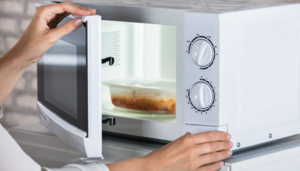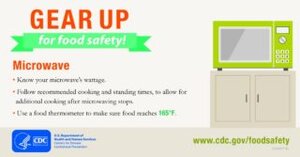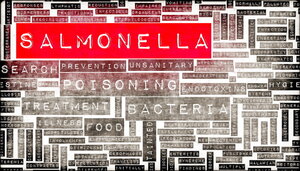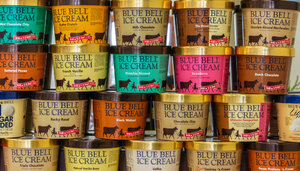 Make sure your microwave heats your food evenly
Make sure your microwave heats your food evenlyBy News Desk on July 7, 2021
According to a study from Michigan State University, microwaves, even those with a turntable inside, can cook unevenly and leave cold spots where harmful bacteria can survive.

It is important to remember that microwaves don’t kill bacteria unless the food is heated long enough. Microwave cooking can be uneven just as with frying and grilling.
The United States Department of Agriculture’s Food Safety and Inspection Service (USDA FSIS) estimates that over 90 percent of American homes have at least one microwave oven. Everyone knows what great time savers microwaves are, but microwaves will only kill bacteria and keep food safe when foods are heated to a safe internal temperature.
Here are some helpful tips from the Michigan State University Extension recommends following to ensure your microwaved food is safe:
- Reheat foods to a temperature of 165 degrees Fahrenheit and confirm the temperature with a thermometer in several areas of the food.
- Follow the package instruction for heating the food, including both the cooking and standing times listed. The standing time is how long food should stand before it is eaten. Standing time is an important part of the cooking process and should be followed so food is cooked to a safe temperature.
- Cover food that is being heated in the microwave.
- Stir food and rotate during the heating process to help decrease the hot spots that arise due to uneven cooking.
- Only reheat or cook foods in the microwave in containers that are labeled “safe for use in microwave.”
- Keep your microwave clean and maintained.
About MSU Extension
Michigan State University Extension’s mission is to help people improve their lives through an educational process that applies knowledge to critical issues, needs, and opportunities.
To learn more about MSU Extension, visit their webpage.
(To sign up for a free subscription to Food Safety News, click here.)
 Salmonella sickens six in Spain; outbreaks decline in Andalucía
Salmonella sickens six in Spain; outbreaks decline in AndalucíaBy News Desk on July 7, 2021
Public health officials in a Spanish region have reported six confirmed Salmonella infections.
Surveys and epidemiological work by Castilla y León Public Health have shown the outbreak could have been caused by the consumption of tortillas in two establishments in Soria. A Spanish tortilla also called a Spanish omelet can contain herbs, spices, potatoes, and eggs.
The product was cooked at one of these sites and part of it was transferred, once prepared, to the second.
Two children and four adults are affected. The two young people went to the Santa Bárbara Hospital and were then transferred to Burgos University Hospital, where they were admitted to the pediatric Intensive Care Unit (ICU).
Two women and two men between 31 and 51 years old are also sick. All of them needed hospital treatment. One person is in ICU and the other three appear to be recovering.
The Public Health Veterinary Services is carrying out inspections to verify the hygienic and sanitary conditions in which the items consumed by these patients were produced and the way in which they were transferred to the second establishment.
COVID impact on food outbreaks in Andalucía
Meanwhile, food poisoning cases more than halved in Andalucía this past year with the drop attributed to measures put in place due to the Coronavirus pandemic.
Figures come from La Consejería de Salud y Familias (The Ministry of Health and Families) which published the epidemiological surveillance of foodborne diseases in 2020.
Officials said the influence that the COVID-19 pandemic had on the annual evaluation of foodborne infections was “very clearly and directly demonstrated” due to mask-wearing, restrictions on the population, less travel, frequent handwashing, and closure of food premises.
The number of outbreaks in 2019 was 248 while the figure in 2020 was 101. In total, 3,585 people were affected in 2019 compared to 829 patients in 2020. Salmonellosis continued to be the most common causative agent in outbreaks followed by norovirus.
The seasonal pattern in 2020 also showed a significant variation in previous years. A decrease was seen in April and May, and the highest number occurred in June to August. Past years saw an upward trend until October but it dec
 Photo illustration Survey highlights consumer behavior on products linked to outbreak
Photo illustration Survey highlights consumer behavior on products linked to outbreakBy Joe Whitworth on July 7, 2021
A survey has revealed more about people’s attitudes when handling frozen partially cooked chicken at home after the products were linked to a large Salmonella outbreak.
The Food Standards Agency (FSA) is investigating a spike in Salmonella infections in the United Kingdom from eating frozen raw, breaded chicken products such as nuggets, goujons, dippers, poppers, and kievs.
Between January 2020 and May 2021, there have been 511 salmonellosis cases caused by two strains of Salmonella Enteritidis traced to two suppliers in Poland. For patients where information is available, a third have needed hospital treatment. The majority of those affected are 16 years old or younger.
Earlier this year, the European Centre for Disease Prevention and Control (ECDC) reported that almost 200 people were ill in Denmark, Finland, France, Germany, Ireland, the Netherlands, Poland, and Sweden between May 2018 and December 2020 from one of these strains.
In March, FSA and Food Standards Scotland (FSS) commissioned an online survey by Ipsos MORI to identify self-reported consumer behaviors which could increase their risk of foodborne disease.
Handwashing and handling
A total of 3,740 respondents aged 16 to 75 living in the UK completed the survey as they had cooked or eaten coated frozen chicken recently. They were asked about handling, storing, and cooking these items. Young adults, teenagers, and children tend to eat the products more frequently.
Over half of consumers say they always wash their hands when handling coated frozen chicken products, while one in five often do this. One in six only sometimes does it and 4 percent never do.
Almost two-thirds of those who cook these products say uncooked frozen chicken at least sometimes comes into contact with other surfaces such as worktops and plates.
Among those who defrost products, half say they leave them at room temperature, and 44 percent put them in the fridge, some use a microwave and others defrost products in water. Sixty percent of consumers who personally cook products say they cook them within 30 minutes of removal from the freezer.
Over half of those who do the cooking say they always check instructions before cooking. The most common methods for seeing if products are fully cooked are checking the middle is hot, checking the meat is white throughout, seeing the product is golden brown on the outside, following instructions on the label, and using a timer. Ten percent use a thermometer or probe.
Products often contain raw chicken
Frozen chicken products are often cooked with other things such as chips or vegetables. If chicken is cooked at a lower temperature or for a shorter time than advised it may not be thoroughly cooked.
Over a third of those who cook coated frozen chicken products say they put leftovers in the fridge. Fourteen percent say they leave them at room temperature and eat them the same day, and 10 percent do this and eat them the next day.
Narriman Looch, head of animal feed and the foodborne disease control branch, urged consumers to follow cooking instructions to protect themselves and their families.
“It’s important to understand that frozen chicken products often contain raw chicken, even though they may look pre-cooked on the outside. While additional measures have been put in place by food businesses to improve the safety of these products, consumers need to handle these products as they should other raw meat products.”
The FSA advised people to treat the products as raw chicken, ensuring surfaces they have touched are cleaned to avoid the spread of bacteria; to check instructions on the packaging and cook at the correct temperature for the time stated; to wash hands, utensils, and clean surfaces after handling the products and if they need defrosting, follow the storage instructions on the box and always defrost in the fridge.
(To sign up for a free subscription to Food Safety News, click here.)
reased in 2020. However, there was a noticeable rise in December, possibly coinciding with the easing of COVID-19 measures.
Based on data on the place of preparation of the contaminated food vehicle; 22 outbreaks each were linked to private homes and restaurants followed by bars and cafeterias.
Confirmed and suspected foods most frequently linked to outbreaks included eggs and food made from egg products, fish, shellfish, and bivalve mollusks, meat and meat products, and sauces.
Factors contributing to incidents included preservation of food at room temperature, food preparation too far in advance, poor cleaning of kitchen utensils, cross-contamination in the kitchen, insufficient refrigeration of food, or infected food handlers.
(To sign up for a free subscription to Food Safety News, click here.)
 Blue Bell criminal trial not likely to begin until March 21, 2022
Blue Bell criminal trial not likely to begin until March 21, 2022By Dan Flynn on July 7, 2021
Jury selection in Austin, TX, for the criminal trial of the former chief executive of Blue Bell Creameries, is not likely to begin until 2022.
The government does not oppose a pending defense motion to delay the trial of sixty-six-year-old Paul Kruse until March 21, 2022. The new start date is four months and 13 days later than the current schedule, which has the trial beginning on Nov.. 8, 2021.
The Kruse defense team, Chris Flood of Houston and John Cline of San Francisco, are in demand with other trials. Flood has a jury trial starting October 4 in New York, and Cline has a jury trial in California with a January 24, 2022 start date.
Flood also says the additional time is needed to prepare for trial because “this case is voluminous.”
“To date, the government has produced more than 1.1 million pages of material,” Flood says in his motion. “Some of the material is of a scientific or technical nature that requires consultation with experts. The defense has been reviewing the material diligently, but more time is needed to ensure thorough trial preparation.”
Flood also said the government, on June 18, 2021, provided notice for 24 experts it may call. He said the parties are in discussion “to narrow the breadth and scope of potential expert testimony.”
“The defense needs additional time to review the reports of these proposed experts, to determine whether Daubert or other challenges are appropriate, and to consider the retention of potential defense experts,” Flood added.
The defense agrees that the additional time until the trial starts won’t count against the Speedy Trial rule. Flood has prepared the motion for Judge Robert Pitman of the Texas Western District. Usually, when the prosecution and defense agreed on logistics like a trial schedule, the judge goes along. But not always.
Kruse entered a “not guilty” plea on Nov. 4, 2020, to a charge of conspiracy and six counts of fraud.
A federal grand jury for Western Texas brought charges against Kruse on Oct. 20 for crimes that occurred during the 2015 listeria outbreak associated with Blue Bell products.
The government brought the same charges against Kruse on May 1, 2020, without getting a grand jury indictment only to see the charges dismissed by the court for lack of jurisdiction.
Federal courts in 2020 ceased most grand jury proceedings because of the pandemic. But Kruse would not waive his right to be indicted by a grand jury, forcing the dismissal of all charges last July.
Government prosecutors returned the same charges on Oct. 20 as a grand jury indictment.
Kruse, an attorney, retired four years ago as Blue Bell’s longtime chief executive. The U.S. District Court for Western Texas in Austin is hearing the case. Kruse is a resident of Brenham, TX where Blue Bell Creameries is headquartered about 90 miles east of Austin.
As a corporate entity, Blue Bell pleaded guilty in a related case in May to two counts of distributing adulterated food products in violation of the Federal Food, Drug, and Cosmetic Act.
It agreed to pay criminal penalties totaling $17.5 million and $2,1 million to resolve False Claims Act allegations regarding ice cream products manufactured under insanitary conditions and sold to federal facilities, including the military. The total $19.35 million in fine, forfeiture, and civil settlement payments was the second-largest amount ever paid in the resolution of a food safety matter.
At issue in the criminal charges is Kruse’s role in the 2015 listeria outbreak, in which Blue Bell brand products were the source. A total of 10 people with listeriosis related to the outbreak were reported from 4 states: Arizona (1), Kansas (5), Oklahoma (1), and Texas (3). All ill people were hospitalized. Three deaths were reported from Kansas (3).
On April 20, 2015, Blue Bell Creameries voluntarily recalled all of its products currently on the market made at all of its facilities, including ice cream, frozen yogurt, sherbet, and frozen snacks. It also closed its production facilities in four states.
The U.S. Food and Drug Administration released the critical findings from recent inspections at the Blue Bell production facilities on May 7, 2015.
Blue Bell, including its officers and directors, have also faced civil actions by shareholders and insurance companies,, resulting from the outbreak.
Listeriosis is a life-threatening infection caused by eating food contaminated with the bacterium (germ) Listeria monocytogenes (Listeria). People at high risk for listeriosis include pregnant women and their newborns, adults 65 and older, and people with weakened immune systems.
(To sign up for a free subscription to Food Safety News, click here.)
....




